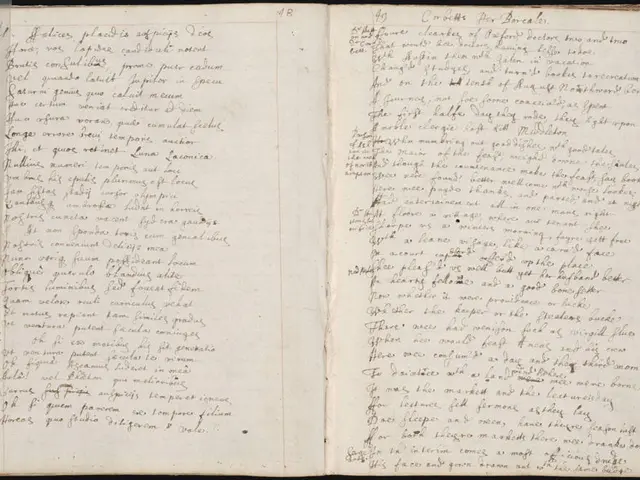Experiencing Over 20 Hours with Wagnerians at Deutsche Oper's The Ring Cycle
Richard Wagner's antisemitic views, evident in his writings and works, have long been a subject of controversy. His opera, Götterdämmerung, the final instalment of the Ring Cycle, is no exception. In a bid to unsettle Wagner's framing of Jews as a "corrosive foreign element", Stefan Herheim's staging of Götterdämmerung at the Deutsche Oper makes the search for home a major theme.
This innovative production, known for its symbolic and psychological interpretations, invites audiences to rethink themes such as power, downfall, and cultural identity embedded in Wagner’s Ring. However, a detailed analysis of Herheim's treatment of antisemitism in this staging is not readily available.
The Legacy of Wagner's Antisemitism
Wagner's antisemitic views were particularly venomous, as evidenced by his work, where he calls Jews "the plastic demon of the downfall of humanity." His work, including his publication "Jewishness in Music," is known for its antisemitic views. This association with antisemitism has fueled post-WWII controversy, leading to unofficial bans in places like Israel.
Scholarly opinion varies on the extent of antisemitism’s influence in the musical content itself, with consensus that understanding these views aids interpretation but does not wholly define the music. Wagner was part of a wider cultural phenomenon of romantic nationalism and antisemitism in 19th-century Germany rather than its sole or primary source.
Herheim's Innovative Staging
Despite the lack of detailed analysis on the specific treatment of antisemitism in Herheim's staging, his productions tend to be layered, offering contemporary reflections that do not ignore historical controversy but rather invite audiences to rethink the themes in Wagner’s Ring.
In this production, Alberich and Hagen are portrayed as evil clowns, and another character is portrayed as a gnome. The audience is encouraged to reflect on their relationship with the performance, particularly in regards to Wagner's antisemitism.
Engaging with the Audience
Herheim's staging also focuses on the audience, incorporating them into the set. A group of opera-goers appear on stage, mimicking the audience. This immersive approach invites the audience to consider their role in the performance and its historical context.
Practical Information
For those planning to attend the production, Siegfried begins at 4 pm. Dining options near the theatre during the production include the nearby restaurant, Crispy Döner, located on Richard-Wagner-Straße.
Wagner's work, including Götterdämmerung, has inspired enthusiasm since he was the Dresden Kapellmeister. Hundreds of Wagnerians gathered at the Deutsche Oper for three Ring cycles in May and June. People attending The Ring of the Nibelung frequently discuss other productions they've seen.
The opera The Ring of the Nibelung is a weeklong commitment, spread across four nights. Attendees often wear headbands with wings, resembling the protagonists' helms. Attendees share tips about dining options near the theatre during the production.
In summary, Herheim's staging of Götterdämmerung offers a thoughtful and symbolic engagement with Wagner’s Ring, situating the work in historical and modern contexts. However, it does not completely satisfy in its address of Wagner's antisemitism. The production serves as a reminder of the complex legacy of Wagner's work, involving the tension between artistic innovation and ideological problems, a tension that modern performances often seek to confront or reflect critically.
- Despite the complex legacy of Wagner's antisemitic views, Stefan Herheim's staging of Götterdämmerung encourages audiences to engage with the themes of power, downfall, and cultural identity embedded in Wagner’s Ring Cycle by portraying characters as evil clowns and gnomes, inviting reflection on their relationship with the performance.
- In addition to offering contemporary reflections on Wagner’s work, Herheim's innovative staging invites audiences to consider their role in the performance, incorporating opera-goers into the set and encouraging them to reflect on the historical context, creating an immersive experience that challenges viewers to rethink the complex legacy of Wagner's antisemitic views and artistic innovation.







